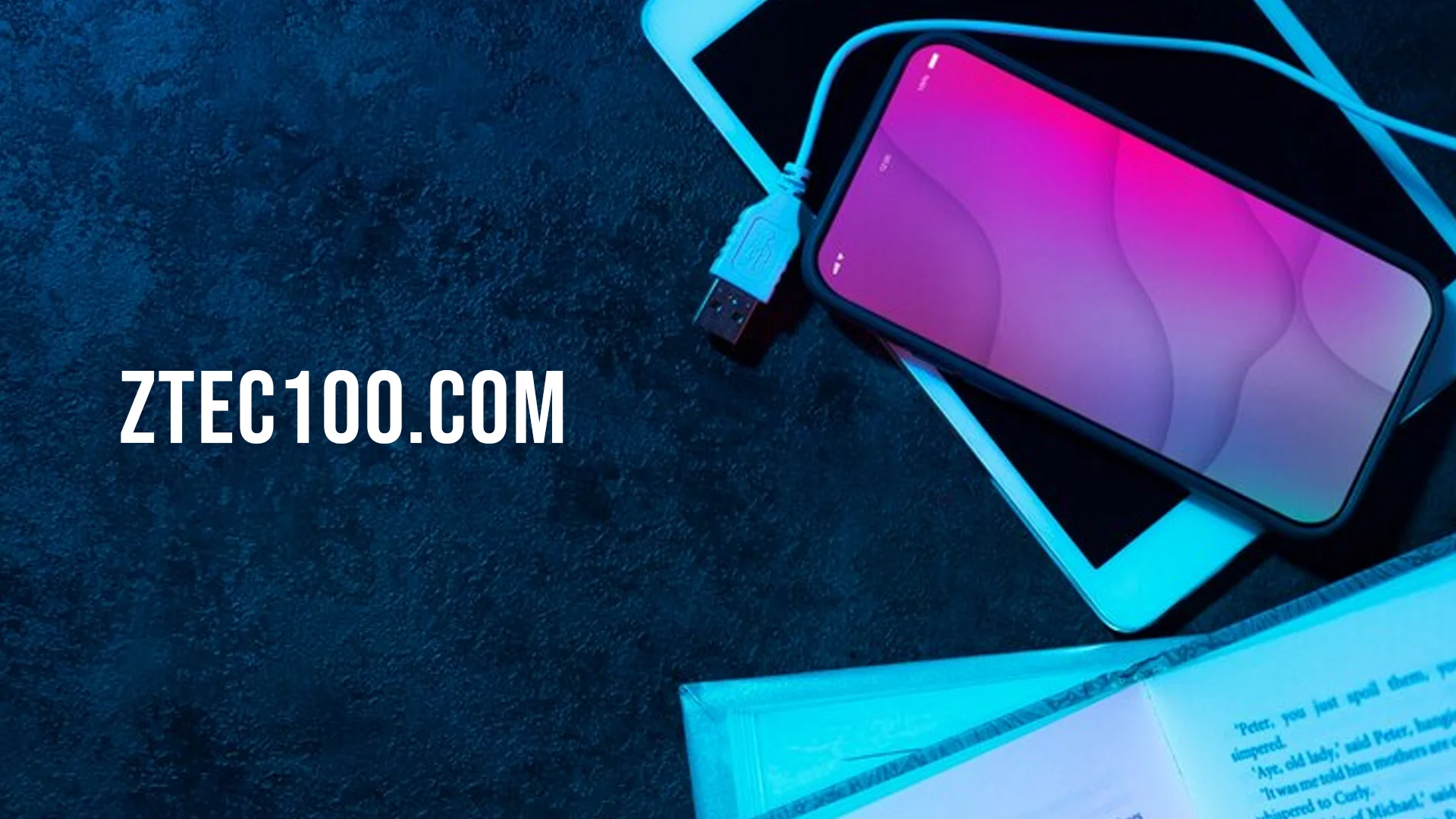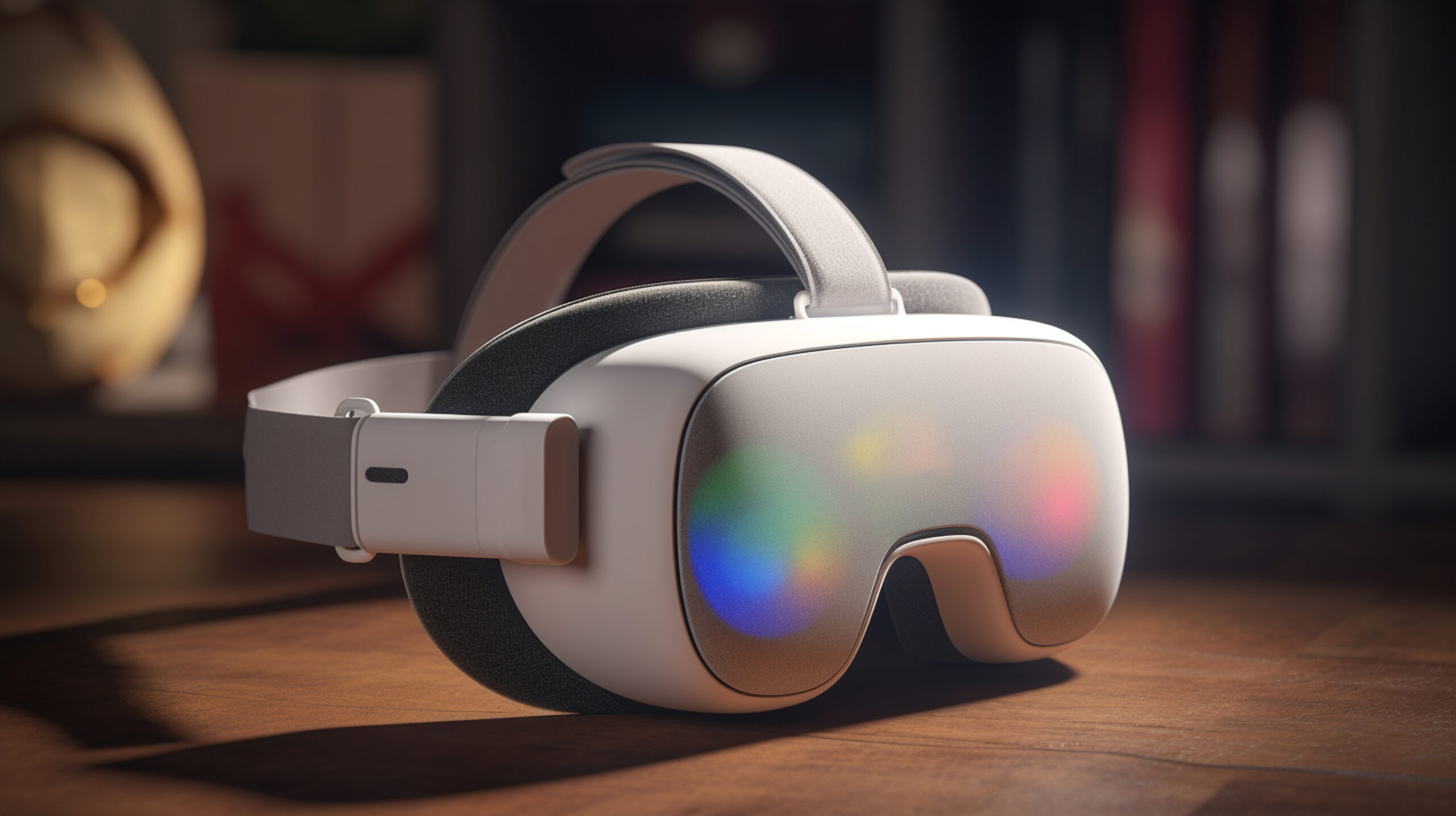Best Vision Pro From Apple 2025 Apple Vision Pro boasts an ultra-high-resolution display system with 23 million pixels spread across two monitors, which is more than a 4K TV for each eye.
Apple has spent more than ten years developing the augmented and virtual reality headgear known as Apple Vision Pro. With the device’s June WWDC 2023 introduction, Vision Pro is the company’s first foray into a new product category since the 2015 Apple Watch. Early 2024 is the target launch window, which is from January to late April.
Although Apple does not refer to the Apple Vision Pro as a headset, it is undoubtedly one. Rather, because of its capacity to integrate digital content with the real environment, Apple refers to it as a spatial computer.
It’s important to note that the Apple Vision Pro is not see-through. It is a mixed reality headset that shows immersive fully virtual material and augmented reality content superimposed on the environment around you. All of what you see is digital. Apple employs cameras to map out your surroundings and convert them into a digital image enhanced with virtual features for augmented reality entertainment that doesn’t make your surroundings disappear.
Apple turns off those cameras for a virtual reality experience, which might give you the impression that everything around you has stopped, leaving you free to concentrate just on the content on the headset’s screens. The “real” and “immersive” can be switched between using an on-device Digital Crown.

In terms of design, the Apple Vision Pro is similar to a pair of ski goggles. Its front is made of a single piece of laminated glass that blends into an aluminum alloy frame. To filter out light, a fitting, soft Light Seal fits over your face and magnetically fastens to the frame.
Spatial Audio combines what you hear on the headset with what’s happening in the real world using two Audio Straps with built-in speakers placed at the sides of the device. The Vision Pro is held in place by a 3D knitted headband that is connected to the Audio Straps. For comfort, Apple made it breathable, flexible, and cushioned. Apple intends to release interchangeable headbands and Light Seals in various sizes.
Two micro-OLED screens located inside the frame provide each eye with over 4K resolution or 23 million pixels. For others to determine whether you are using the headset in an immersive mode or whether you can see what is going on around you, there is an additional external display called EyeSight that projects a picture of your eyes. Custom prescription Zeiss Optical Inserts are available for those who use glasses, and these can be magnetically connected to the headset’s lenses.
Apple Vision Pro lacks controllers; instead, voice commands, hand gestures, and eye tracking are used to operate the headset. An application can be accessed by glancing at it, navigating to it, and then tapping with the fingers. All it takes to scroll is a quick finger flick.

With Apple Vision Pro, over a dozen cameras and sensors map your surroundings while monitoring your hand and eye motions. Authentication is done by Optic ID, which uses cameras and infrared lights to scan your iris. Everybody has a different pattern in their iris, and Optic ID works similarly to Face ID and Touch ID. It may be used to replace passwords, unlock the device, and make purchases.
Inside Vision Pro are two Apple silicon chips: a new R1 chip and the same M2 processor found in the Mac. While the R1 chip handles input from the cameras, sensors, and microphones, the M2 chip runs visionOS, performs computer vision algorithms, and produces visuals.
The built-in camera on the Apple Vision Pro can capture 3D Best Vision Pro From Apple 2025 images and videos when the top button of the gadget is tapped. According to Apple, users will be able to take 3D pictures and films and then relive those moments like never before. Additionally, to enhance immersion, Vision Pro will display existing images and videos in a big format. Take note that Vision Pro indicates that video recording is taking place with an animation on the external display while you are recording.
Alternatively, it can be fueled by an adaptor or a battery pack worn at the hip that is connected to a braided cable. With just one charge, the battery pack provides two hours of battery life.
You may see content displayed in the area around you using Apple Vision Pro. With support for multiple windows, you can reposition apps and windows in midair as you see fit. Working with an “infinite canvas” is what Apple claims. You can use an immersive view that blocks out the outside world and projects material onto a virtual background known as an environment, or you can use apps that display in the actual location you’re in so you can keep aware of what’s going on around you.
Running on Apple Vision Pro, a visionOS operating system offers an App Store with apps made just for the device in addition to supporting iPhone and iPad apps. The Vision Pro may be connected to a Mac, and the headset will act as the Mac’s display. For text input and control, it can be used with Bluetooth attachments. Alternatively, you can use dictation or virtual typing.
All of your favorite Apple apps, including Mail, Messages, Music, Safari, Photos, and more, are available in the main Home View, and your data is synchronized with iCloud. While you may launch and virtually arrange apps, the interface is similar to that of the iPhone. In addition to creating APIs and updating its primary apps for visionOS, Apple is also giving developers access to Vision Pro test kits so they can test their apps. With Apple Vision Pro, you can enjoy immersive media on TV and in movies. Expanded content can be made to have spatial audio and feel as though it is in your home theatre.
For Vision Pro

FaceTime has been overhauled. The headset wearer sees people on the call as huge tiles, and they are represented by a realistic digital reproduction using their digital character. Users of Vision Pro can share apps or work together on documents with others via FaceTime, and spatial audio identifies the speaker.
You can view films and television shows in the Best Vision Pro From Apple 2025 Cinema Environment at the frame rate and aspect ratio selected by the director, or you can utilize an environment with a natural theme to make the screen appear 100 feet wide. Apple also made Apple Immersive Videos, which are 180-degree 3D 8K recordings that immerse viewers in the action. Additionally, Vision Pro customers may access streaming services like Disney+ and Apple TV+. Regarding gaming, Vision Pro is compatible with Apple Arcade, and at launch, 100 iPad titles will be available. Bluetooth game controllers that link to the headset can be used to play games.
The $3,499 Apple Vision Pro is expected to go on sale in the first part of 2024. When it launches, it will be sold in stores exclusively in the United States and on Apple.com.
How It Operates

Because Apple Vision Pro is a “mixed reality” headset, it can show content from both augmented and virtual reality. But unlike augmented reality glasses, it is made to completely cover your eyes and obscure everything around you.
Apple’s augmented reality feature makes use of both internal and external cameras. With the help of see-through glasses, you may virtually view an accurate representation of your real-world surroundings since the cameras can map the area around you and project the real world back to you.
With this feature, Apple can display 3D windows, objects, and content in your real space. Alternatively, you can switch off the cameras to create a completely virtual environment. Apple is emphasizing how the Vision Pro headset enables users to work, consume content, play games, communicate, and engage in other activities “anywhere”.
Develop

Although Apple does not call its wearable “spatial computing” device Vision Pro a headset, that is precisely what it is. The Apple Vision Pro is a head-mounted virtual/augmented reality headgear that resembles Meta Quest or the PlayStation VR.
In terms of design, the Vision Pro resembles a premium set of ski goggles. According to Apple, its front is made of laminated glass that was “three-dimensionally formed.” A curved frame made of aluminum alloy encircles the face and is fixed to which is the glass. The headset is currently only offered in silver with bands and Light Seals that complement grey.
The Light Seal, which Apple sells in a variety of shapes and sizes to match various facial shapes, is magnetically attached to the frame and rests on the face. For the headset to function properly and to filter out light, the Light Seal must fit snugly. Apple made the Light Seal bendable to accommodate different face shapes.
Two audio straps with speakers that provide spatial audio are located at the side of the headset. The headset is fastened to the back of the head by a 3D braided fabric strap that the audio straps attach to. The strap has an adjustable dial to provide a bespoke fit. Because the primary braided headband is detachable, wearers will be able to switch it out for one that fits them better in terms of size or, should Apple decide to release more designs in the future, style.
Apple designed the headband’s rib structure to offer stretch, ventilation, and cushioning to make it comfortable to wear for extended periods.
For improved weight distribution, an additional strap that can be worn over the head is also available. Regarding this extra strap, Apple has not released many details, and it is said that the design is still in the early stages. After discovering that users with smaller heads and bodies find it difficult to wear the headset for longer than 30 minutes, Apple decided to add the strap.
Physical controls include a top button that doubles as a camera button to take 3D “spatial” recordings and pictures and a Digital Crown that modifies your “immersion” level and shows you approximately what’s around you through “Environments.”
The braided wire that powers the headset can be attached to the opening on the left side of the headset. The round charging puck rotates to firmly click into the headset, but it doesn’t appear like the charging puck for an Apple Watch.
The charging cord fastens to a power adapter that is plugged into the wall or an external battery pack that is worn around the waist.
Show Off

Apple claims that the 23 million pixels available on the two specially designed micro-OLED panels in the Apple Vision Pro are “more pixels than a 4K TV.” Although the headset displays have a 90Hz refresh rate by default, 24 frames per second movies can activate a 96Hz refresh rate.
Although the display’s size has been described as that of a postage stamp, the hardware specifications are yet unknown.
Additionally, an external “EyeSight” display allows others in the room to see the wearer’s eyes through the headset. People can use this function to determine if the wearer of the headset is in a completely immersive virtual reality mode or a less immersive augmented reality mode.
An internal camera that records the wearer’s eye movements provides the eye display that is displayed on the external display. Additionally, it can notify others when you use the external camera to shoot video.
Lens Covers
Zeiss Optical inserts with their prescription can be ordered by Apple Vision Pro users who wear glasses. Pricing for this has not yet been disclosed, although it will be an additional expense. The displays within the headgear will be magnetically attached to the optics.
Sensors And Cameras

Twelve cameras and five sensors are used in Apple Vision Pro to map the surrounding area and track hand movements.
When in augmented reality mode, two of the cameras send more than a billion pixels per second to the display to represent the real environment surrounding the wearer; the other cameras are used for real-time 3D mapping, head tracking, and hand tracking.
In low light, infrared flood illuminators improve hand tracking, while LiDAR depth sensors let you locate and measure things in the room.
The headset has four infrared cameras and LED lights within it for eye tracking. The Vision Pro can determine the precise location of the wearer’s gaze for navigational reasons thanks to its technology.
Finding Your Way
The Vision Pro is not equipped with any physical controls. Voice-activated instructions, hand gestures, and eye movements are used for navigation. For instance, in visions, you can use a simple hand motion to open an app by highlighting an element, such as an app icon, with your eyes.
Although they are primarily intended to be used with an Apple Arcade game connection and with a Mac, Bluetooth keyboards, mice, trackpads, and game controllers can be linked to Vision Pro as an additional navigation method.
Visible ID

Optic ID is a security feature of the Vision Pro that makes use of its infrared cameras and LED lights. Similar to Touch ID or Face ID, Optic ID uses iris scanning rather than fingerprint or face scanning.
The headset can identify each individual’s distinct iris pattern to protect sensitive data stored on it. Similar to Face ID, Optic ID can be used as an alternative to passwords for purchases, device unlocking, and authentication.
3D Lens

With the Vision Pro, users may examine 3D photographs and videos taken with Apple’s outside camera in three dimensions. Apple claims that because of the “incredible depth” that is available, using them is similar to reliving an experience in person.
When recording is enabled, the camera indicates that it is impossible to record video covertly using the headset.
Music

The speakers are integrated into the straps that are fastened to the frame, and there are speakers on either side of the headset. The speakers include dual-driver audio pods adjacent to each ear, and they can adjust the sound to fit the acoustics of the room by analyzing its characteristics.
There are six microphones for voice commands, video calls, and phone conversations in addition to the speakers’ capabilities for spatial audio, which creates an immersive surround sound experience.
The USB-C AirPods Pro, which was released in September 2023, provides 20-bit, 48 kHz lossless music with extremely minimal latency when linked to the Apple Vision Pro, providing users with an even better audio experience.
Cpus As Well As RAM

Two chips power the Apple Vision Pro. The M2 microprocessor, which debuted with the 2022 MacBook Air, serves as the primary CPU. Its duties include supplying graphical content, processing content, executing computer vision algorithms, and operating the visionOS operating system.
Every piece of data originating from the cameras, sensors, and microphones is handled by a second R1 chip. Apple claims that it can deliver a “virtually lag-free” view of the environment by streaming images to the displays in less than 12 milliseconds.
The Vision Pro’s internal thermal system regulates heat and enhances performance by silently pushing air through the headset.
Dynamic random access memory, or DRAM, specifically engineered to accommodate the R1 input processing processor, will be utilized by the Vision Pro headset. Apple will receive 1-gigabit low latency DRAM chips from SK Hynix, which feature more input and output pins to reduce delays.
Life Of A Battery

Using the external battery pack, the Vision Pro has a two-hour runtime. Though there is a single battery pack included in the gadget, they may be changed out for more power on the move. The Vision Pro has a full day’s battery life when plugged into a power adapter.
Based on code references discovered in tvOS 17, the battery pack intended for the Vision Pro may be referred to as the “Magic Battery”.
Visual
The operating system called visionOS, which Apple created especially for the headset, is used by Apple Vision Pro. The “infinite canvas” feature of visionOS allows app windows to move anywhere in the area around the user.
Apps such as FaceTime, Messages, Safari, and more have been rebuilt by Apple to function in a 3D environment. In addition, the headgear is compatible with the whole library of iPhone and iPad apps. Apps for the iPhone and iPad can be used on the virtual canvas, but they are not optimized for 3D.
With Apple TV+ and other apps, you can stream movies and TV episodes that can be resized to appear to be “100 feet wide.” Apple has developed unique immersive 3D content specifically for vision, and it also has its App Store.
Because it can be operated entirely without the need for physical controls—using only hand gestures and the eyes—vision is referred to be the first spatial operating system.
Integration For Mac

A Mac can be used with visionOS as a display. It functions as a massive external display for Mac content and linked keyboards, mice, and trackpads provide users with familiar capabilities.
Iphone Compatibility

The Vision Pro headset will also function with the iPhone, though precise information regarding iPhone integration is still unknown. Text entry and other comparable tasks might be possible with the iPhone.
FAQs
Reality Pro: What is it?
The name, cost, and design of the Apple mixed-reality headset, The name come first. The consensus from most sources is that the future product will likely be called Reality Pro, even though Apple has already trademarked two other similar names: “Reality One” and “Reality Processor.”
How much of a pro is reality?
The Apple Reality Pro, which retails for $3,499, raises the bar for AR, VR, and the broad category of XR. With a device Apple refers to as a “spatial computer,” you can virtually surround your Mac, make FaceTime calls without taking out your pocket, and compose emails from the comfort of your couch.
What is the price of Apple VR?
The Apple Vision Pro, which costs $3,499, is undoubtedly the most costly mixed-reality or virtual-reality headset available for consumers. Unfortunately, Apple claims that it won’t be accessible until 2024, so you’ll have to wait a bit to get your hands on it. This concludes our knowledge regarding the Apple Vision Pro.
Conclusion
As far as the goals of each technology are concerned, augmented reality and virtual reality are mirror images of each other. Whereas virtual reality replicates a real-world environment digitally, augmented reality superimposes virtual elements in the real world.












